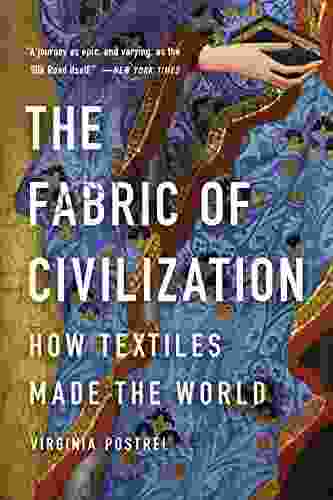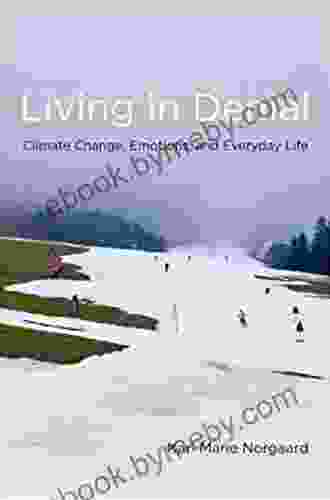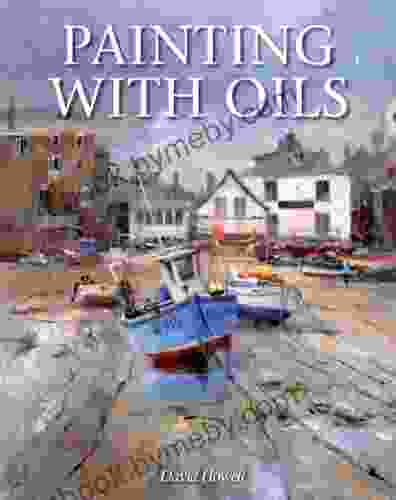How Textiles Made the World: Unraveling the Threads of Human History

From the humble beginnings of weaving plant fibers to the intricate fabrics that adorn our modern world, textiles have played an integral role in shaping human civilization. "How Textiles Made the World" by Jennifer Evans is a captivating exploration of this fascinating subject, unraveling the intricate threads that connect the evolution of textiles to the tapestry of our shared past.
4.7 out of 5
| Language | : | English |
| File size | : | 69001 KB |
| Text-to-Speech | : | Enabled |
| Screen Reader | : | Supported |
| Enhanced typesetting | : | Enabled |
| X-Ray | : | Enabled |
| Word Wise | : | Enabled |
| Print length | : | 321 pages |
The Birth of Textiles
The roots of textiles lie deep in the human quest for shelter and warmth. Early humans utilized animal skins and plant materials to create rudimentary garments. As civilizations emerged, these simple coverings evolved into more sophisticated fabrics, woven from flax, cotton, and wool.
Textiles as Tools
Beyond their primary function as clothing, textiles served numerous practical purposes. Sails propelled ships across vast oceans, enabling trade and exploration. Ropes and cords held structures together, from humble homes to towering temples. Canvas provided protection from the elements on battlefields and worksites.
**Textiles as Art
Throughout history, textiles have been a canvas for artistic expression. Embroidered garments adorned the robes of kings and queens. Woven tapestries depicted epic stories and religious scenes. Intricate brocades and silks adorned palaces and noble homes.
**Textiles as Currency
In many cultures, textiles served as a valuable form of currency. In ancient China, silk was so highly prized that it was used to pay taxes and wages. In West Africa, cotton cloth was a medium of exchange, used to Free Download goods and services.
**Textiles and Social Hierarchies
Textiles played a pivotal role in establishing and maintaining social hierarchies. The quality and type of fabric worn by an individual indicated their status and wealth. Sumptuary laws often restricted the use of certain textiles to the elite.
**Textiles and Identity
The fabrics we wear are often an expression of our cultural and personal identities. Traditional textiles, such as the kente cloth of Ghana or the ikat of Indonesia, are deeply rooted in the heritage of their respective communities. Wearing these garments connects us to our ancestors and our shared history.
**Textiles and the Environment
The production and consumption of textiles have had a significant impact on the environment. The cultivation of cotton and other natural fibers requires vast amounts of land and water resources. Synthetic fibers, such as polyester, contribute to pollution and waste.
**Textiles in the Modern World
In the contemporary world, textiles continue to play a crucial role. From the lightweight fabrics used in sports apparel to the advanced materials employed in medical devices, textiles are an integral part of our everyday lives.
**The Enduring Legacy of Textiles
"How Textiles Made the World" concludes with a reflection on the enduring legacy of textiles. From the ancient looms of Mesopotamia to the high-tech factories of today, textiles have shaped our societies, our cultures, and our individual identities.
Jennifer Evans' "How Textiles Made the World" is an engaging and informative account of the profound impact that textiles have had on human history. Through a captivating narrative and detailed research, she unravels the intricate threads that connect the evolution of textiles to the tapestry of our shared past. This book is a must-read for anyone interested in fashion, art, history, and the intersection of human ingenuity and material culture.
4.7 out of 5
| Language | : | English |
| File size | : | 69001 KB |
| Text-to-Speech | : | Enabled |
| Screen Reader | : | Supported |
| Enhanced typesetting | : | Enabled |
| X-Ray | : | Enabled |
| Word Wise | : | Enabled |
| Print length | : | 321 pages |
Do you want to contribute by writing guest posts on this blog?
Please contact us and send us a resume of previous articles that you have written.
 Book
Book Novel
Novel Page
Page Chapter
Chapter Text
Text Story
Story Genre
Genre Reader
Reader Library
Library Paperback
Paperback E-book
E-book Magazine
Magazine Newspaper
Newspaper Paragraph
Paragraph Sentence
Sentence Bookmark
Bookmark Shelf
Shelf Glossary
Glossary Bibliography
Bibliography Foreword
Foreword Preface
Preface Synopsis
Synopsis Annotation
Annotation Footnote
Footnote Manuscript
Manuscript Scroll
Scroll Codex
Codex Tome
Tome Bestseller
Bestseller Classics
Classics Library card
Library card Narrative
Narrative Biography
Biography Autobiography
Autobiography Memoir
Memoir Reference
Reference Encyclopedia
Encyclopedia Martin Mobraten
Martin Mobraten Nadine Hays Pisani
Nadine Hays Pisani Kami Garcia
Kami Garcia Samuel Bridgewater
Samuel Bridgewater Kathy Kristof
Kathy Kristof Julie Tallard Johnson
Julie Tallard Johnson Lars Lundqvist
Lars Lundqvist Justin Howse
Justin Howse Kait Fennell
Kait Fennell Karen Swan
Karen Swan Kate Brideau
Kate Brideau Roz Shafran
Roz Shafran Garth Nix
Garth Nix Joe Baker
Joe Baker Kara Thomas
Kara Thomas Lauren Hartmann
Lauren Hartmann Sam Mahmud
Sam Mahmud Karl Pilkington
Karl Pilkington K Moriyasu
K Moriyasu Juliet Foster
Juliet Foster
Light bulbAdvertise smarter! Our strategic ad space ensures maximum exposure. Reserve your spot today!

 Natsume SōsekiSocio-Economics of Personalized Medicine in Asia: Reshaping Healthcare and...
Natsume SōsekiSocio-Economics of Personalized Medicine in Asia: Reshaping Healthcare and... Bob CooperFollow ·10.3k
Bob CooperFollow ·10.3k Henry HayesFollow ·9.4k
Henry HayesFollow ·9.4k Jamal BlairFollow ·18.4k
Jamal BlairFollow ·18.4k Terence NelsonFollow ·15.9k
Terence NelsonFollow ·15.9k Elias MitchellFollow ·15.7k
Elias MitchellFollow ·15.7k Douglas FosterFollow ·13k
Douglas FosterFollow ·13k Junot DíazFollow ·9.1k
Junot DíazFollow ·9.1k Colton CarterFollow ·17k
Colton CarterFollow ·17k
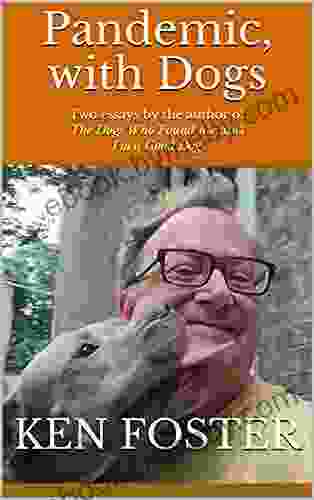
 George Orwell
George OrwellPandemic with Dogs: Two Essays
By Susannah Charleson In the midst of...

 Leo Mitchell
Leo MitchellAdam Smith's The Wealth of Nations: A Classic Treatise on...
Adam Smith's The...
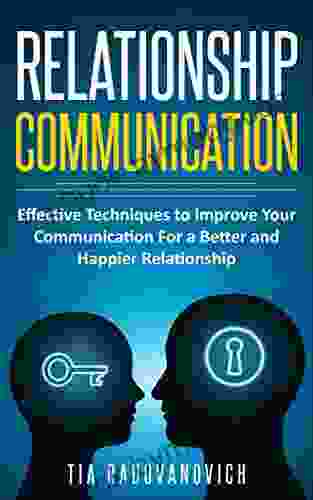
 Cade Simmons
Cade SimmonsUnlock Your Communication Potential: Effective Techniques...
Communication is a fundamental...

 Floyd Richardson
Floyd RichardsonFire and Ashes: Success and Failure in Politics
Fire and Ashes: Success and...

 Oliver Foster
Oliver FosterUnlock the Enchanting Mystery of Ken Follett's "The Key...
Embark on a captivating literary journey into...
4.7 out of 5
| Language | : | English |
| File size | : | 69001 KB |
| Text-to-Speech | : | Enabled |
| Screen Reader | : | Supported |
| Enhanced typesetting | : | Enabled |
| X-Ray | : | Enabled |
| Word Wise | : | Enabled |
| Print length | : | 321 pages |


